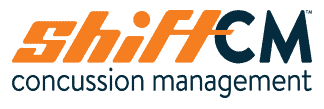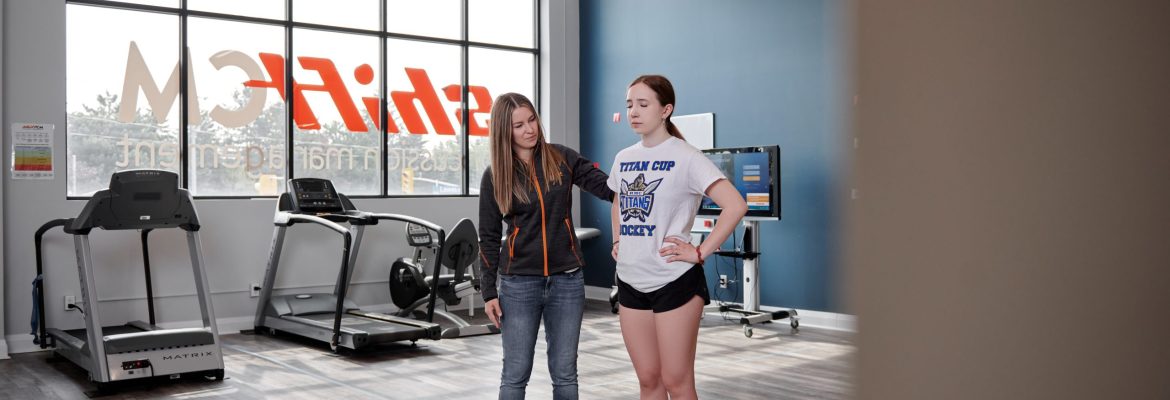After a concussion, one of the many symptoms that one can experience is dizziness. Among those who suffer a concussion, dizziness is the second most common symptom after headaches (Gianoli, 2022). There are three common origins of dizziness that individuals with concussion may experience: vestibular, cervical, and oculomotor. Dizziness may arise from one of these sources, or a combination of the three.
In this article, we explore the different sources of dizziness after a concussion and discuss different treatment options for each kind of dizziness.
Definition of Dizziness vs. Vertigo
The definition of dizziness can be confusing, as it may have a different meaning for different people. Types of dizziness that concussion sufferers describe can include light-headedness, faintness, or unsteadiness. Vertigo can also be considered dizziness, but the sensation is more specific.
Vertigo is a false sensation of movement. Most people describe feeling as though they are spinning or the world is spinning around them. Some people may also call this dizziness, so it is essential to make this distinction.
After taking a patient history, the next step for our healthcare providers is to identify the most likely cause of post-concussion dizziness. This will lead to determining which form of treatment will be most effective.
Ruling out Something More Serious (“Red Flags”)
With every concussion or suspected concussion, a neurological examination should be performed, including cerebellar testing, reflexes, sensory and motor testing, as well as a cranial nerve screen.
With dizziness, patients must be screened for symptoms such as vomiting, slurred speech, unequal pupil sizes, loss of coordination, confusion, or difficulty walking that may point to something more serious, requiring specialized neuroimaging techniques like a CT scan.
To determine if a CT scan is needed, Doctors and Healthcare Providers will look for signs of potential skull fractures, or brain bleeds, (among other more serious sequelae following head trauma) using specific clinical criteria. Some of these criteria include taking into account the specifics around the mechanism of injury, the age of the individual (persons over the age of 65 may be at greater risk), whether there is a presence of symptoms such as repeated vomiting, and whether an individual has scored below 15 on the Glasgow Coma Scale.
An X-ray of the cervical spine (neck) may also be warranted after a head injury in order to rule out any fractures. This is not always necessary, and again, Doctors will use a set of specific criteria to determine whether an Xray is needed. This includes taking into account the mechanism of injury, the age of the patient, the type of neurological symptoms experienced, and their overall ability to move their head and neck.
All of these clinical tests are conducted to rule out more severe injuries that warrant a referral to the ER.
Vestibular Dizziness (Vertigo)
The vestibular system is located in the inner ear and provides input to the brain regarding our head position in space. It can be likened to having a bubble level in each ear that gives information about head movement based on how gravity pulls the bubble.
After ruling out any red flags, investigating symptoms of temporary vertigo associated with turning over in bed or looking in one direction, may lead to a diagnosis of Benign Paroxysmal Positional Vertigo (BPPV). This is one of the most common vestibular causes of dizziness after a head injury. This type of dizziness would be more associated with vertigo descriptors.
BPPV is a condition in the inner ear that involves otoconia (crystals) being displaced in the canals of the inner ear. These otoconia typically dislodge into the semicircular canal located at the back of the system.
One way a clinician can test for this is by performing what’s called the Dix-Hallpike maneuver. This is a positioning test that involves guiding a patient from a seated position to a supine position (laying on back) with the head extended and rotated slightly. The test is positive if the clinician observes nystagmus (a cyclical beat or “jerk” of the eyes) during the test and if the vertigo sensation is reproduced.
Rehabilitation
If the Dix-Hallpike test is positive, a specific maneuver will be performed by your healthcare provider called the Epley maneuver. The Epley maneuver effectively repositions the crystals back to where they should be to eventually eliminate sensations of dizziness and vertigo. Repositioning the crystals may take one or several sessions depending on the clinical case, and specific home exercises may be prescribed afterward to reduce any residual dizziness and imbalance after the vertigo disappears.
Cervical (Neck) Dizziness
The cervical spine or neck can also be a source of dizziness after a concussion (Schneider, 2018). The neck plays a crucial role in spatial awareness (proprioception) and has many receptors that provide feedback to the brain regarding head and neck position in space. Injury to the soft tissues and joints of the upper cervical spine is common following a concussion and can cause a disruption in this signalling.
Dizziness arises when the information received from the cervical spine receptors does not match incoming sensory information from the visual or vestibular systems causing a “mismatch” at the level of the central nervous system. Individuals with whiplash (in absence of concussion) have been known to report issues with dizziness and balance.
People often overlook the involvement of the neck when it comes to concussion, but it can be a significant contributor to symptoms of headache and dizziness. Even if you are not experiencing neck pain or discomfort after your concussion, it is essential to get it checked out.
Rehabilitation
Neck rehabilitation may include a variety of manual therapy techniques to reduce muscle tension and guarding, improve joint mobility and range of motion, and reduce pain. This treatment may include soft tissue release, mobilizations, adjustments, active rehabilitation, or acupuncture depending on the clinician and each patient’s clinical case and preferences. Patients may also complete specific exercises at home to help improve strength, proprioception and overall function.
Oculomotor Dizziness
Dizziness can also arise from the oculomotor system since it couples with the vestibulo-ocular reflex. This reflex involves communication from the vestibular system to the part of the brain that generates eye movements, so that objects you are viewing remain clear even when your head is moving.
The Vestibular Ocular Motor Screen (VOMS) is an evaluation tool used by clinicians for this type of dizziness. It involves a series of tests that examine eye tracking, eye targeting, convergence (tracking a target up close), visual motion sensitivity, and vestibulo-ocular reflex response.
When dizziness is elicited during this type of testing, it may point toward impaired visual and vestibular sensory processing at the level of the central nervous system (brain) due to concussion. However, your clinician will take your entire health history and full clinical exam into account, not just the VOMS results, before determining the most appropriate treatment strategy.
Rehabilitation
Vestibulo-ocular rehabilitation involves various exercises incorporating motion, balance, and/or visual tracking to “re-train” the brain to function more effectively. These exercises may provoke some dizziness, but it is important to expose yourself to these sensations to promote neuroadaptation and eventually eliminate sensations of dizziness and imbalance.
Summary
Dizziness post-concussion is a common symptom, and each person’s experience can vary. Individuals who report a moderate to severe level of dizziness within 14 days of the concussion also tend to report worse symptoms of anxiety and depression than those with mild or no dizziness (Hunt, 2021). Therefore, this highlights the importance of getting assessed with proper intervention early for better outcomes post-concussion.
It is essential for concussion-sufferers and clinicians alike to remember that dizziness can arise from a variety of sources and causes. Of primary importance is getting screened for serious causes of dizziness (red flags) by your medical doctor or healthcare provider early after concussion, followed by a clinical concussion assessment by a trained rehabilitation professional to help determine the best course of treatment. Sometimes both medical and rehabilitation interventions are warranted.
Overall, dizziness is a common symptom after a concussion, and typically requires a multi-modal approach that may require multi-disciplinary care to address. If you find yourself experiencing dizziness following a concussion, seek advice from your doctor and/or a trained rehabilitation professional such as those at Shift Concussion Management. In many cases targeted rehabilitation methods can eliminate dizziness and get you back to your activities of daily living!


Leave a Reply